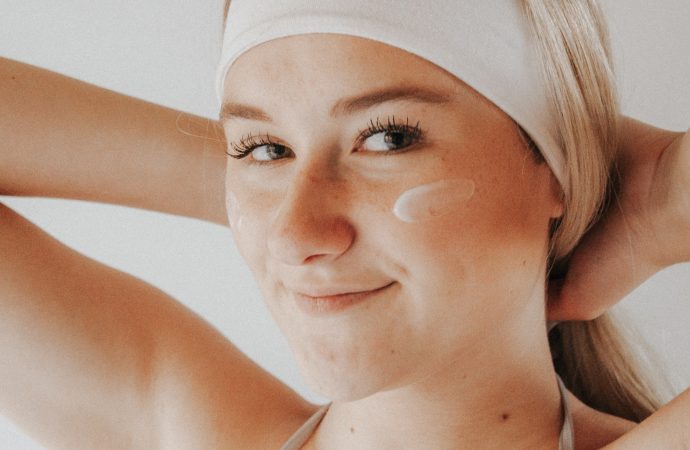Are you tired of constantly battling with skin issues? Acne, dryness, and wrinkles are just a few common problems that many people face on a daily basis. But what if there was a solution to help combat these issues? Enter skin cycling – the latest buzz in the world of skincare. Skin cycling is said
Are you tired of constantly battling with skin issues? Acne, dryness, and wrinkles are just a few common problems that many people face on a daily basis. But what if there was a solution to help combat these issues? Enter skin cycling – the latest buzz in the world of skincare. Skin cycling is said to improve overall skin health by alternating between different products and routines every few days. But does it really work? In this blog post, we’ll explore the science behind skin cycling, its benefits, risks and how to do it safely so you can decide for yourself whether it’s worth trying out.
What is skin cycling?
Skin cycling is a new skincare technique that involves alternating between different products and routines over a period. The idea behind skin cycling is to create an environment where your skin doesn’t get used to one product or routine, which can lead to decreased effectiveness over time.
To begin skin cycling, you need to understand your own skin type and the issues that you’re trying to address. This will help you choose the right products for each cycle.
Each cycle usually lasts around 28-30 days, which is roughly the amount of time it takes for our skin cells to regenerate. During this time, it’s recommended that you use specific products on designated days of the week in order to keep your skin guessing and prevent boredom.
There are several different types of cycles depending on what suits your needs best – some people prefer gentle exfoliation every other day while others may opt for heavy-duty treatments once every few weeks.
Skin cycling aims at promoting healthy cell turnover by keeping the complexion fresh with new treatments regularly. While there isn’t much scientific evidence supporting its benefits yet, many people have claimed visible improvements in their overall complexion after following a consistent practice of skin cycling.
How does skin cycling work?
Skin cycling is a natural process that involves the regular shedding of dead skin cells to make way for new ones. This cycle takes around 28 days, and it helps to keep our skin looking fresh and healthy. However, factors such as aging, pollution, and stress can disrupt this cycle.
Skin cycling aims to restore the natural balance of our skin by encouraging the shedding of dead skin cells and promoting cell turnover. The idea behind skin cycling is that when we remove the buildup of dead skin cells on our face regularly, we allow new ones to come through and regenerate faster.
The process typically involves alternating between using exfoliating products or treatments for several days followed by restorative skincare products designed to support your natural healing processes.
By following a consistent routine that includes both exfoliation and nourishing ingredients tailored towards your specific needs – be it dryness or oiliness – you can help improve overall texture while reducing signs of ageing such as fine lines or wrinkles over time.
Skin Cycling works by helping us maintain healthy-looking skin with an even tone because it promotes cell regeneration naturally.
The benefits of skin cycling
Skin cycling is a beauty trend that has taken the skincare industry by storm. It involves using different products and routines on your skin based on the time of day, month, or season. While some may think it’s just another fad, there are actually several benefits to skin cycling.
Firstly, skin cycling helps address specific concerns at different times of the year. During colder months when our skin is more prone to dryness and dehydration, we can use heavier moisturizers and oils for added hydration. In hotter months when our skin produces more oil and sweat, lighter formulas and exfoliants can help control excess sebum production.
Secondly, switching up your routine prevents your skin from becoming immune to certain products. Our skin adapts quickly to regular routines which can lead to plateauing results over time. By changing up our skincare regimen every few weeks or so through cycling in new products or techniques you keep challenging your complexion.
Lastly but most importantly is that product penetration improves with consistent cycle changes as dead cells are removed via exfoliation allowing active ingredients easier access into deeper dermal layers giving better efficacy overall.
All in all Skin Cycling isn’t just a beauty trend; it’s an effective way of taking care of your complexion while addressing its ever-evolving needs throughout the seasons!
The risks of skin cycling
While skin cycling may have its benefits, it is important to note the potential risks that come with this practice. One of the biggest concerns is over-exfoliation, which can lead to irritation, inflammation and even damage to your skin’s protective barrier.
By constantly exfoliating and stimulating new cell growth, you risk stripping away the natural oils and moisture that keep your skin healthy. This can leave your complexion feeling dry, tight and uncomfortable.
Another risk of skin cycling is using products that are too harsh or abrasive for your particular skin type. It’s important to choose gentle yet effective products that won’t cause further damage or irritation.
If you have any underlying skin conditions such as rosacea or eczema, it’s best to consult a dermatologist before starting a new skincare routine like skin cycling. These conditions can be easily aggravated by aggressive exfoliation or certain skincare ingredients.
While there are certainly benefits to incorporating regular exfoliation into your skincare routine through practices like skin cycling, it’s important to proceed with caution in order to avoid any potential risks or complications.
How to skin cycle safely
When it comes to skin cycling, safety should always be a top priority. Here are some tips on how to safely practice this skincare trend:
1. Start slow: If you’re new to skin cycling, start with just one or two days of alternating your skincare routine before gradually increasing the frequency.
2. Listen to your skin: Pay attention to how your skin responds and adjust accordingly. If you notice any redness, irritation or discomfort, take a break from the cycle until your skin has fully healed.
3. Don’t mix incompatible products: When switching between different types of products (such as acids and retinoids), make sure they are compatible and won’t cause adverse reactions when used together.
4. Use sunscreen daily: Since many exfoliating products can increase sun sensitivity, it’s important to use SPF every day – even on cloudy days!
5. Moisturize regularly: Skin cycling can be drying for some people, so make sure you’re using a hydrating moisturizer daily to keep your skin balanced and healthy.
By following these simple guidelines, you can safely incorporate skin cycling into your skincare routine and enjoy all its benefits without any negative side effects!
Conclusion
Skin cycling is a relatively new concept that has gained popularity in recent years. While it may seem like an effective way to improve your skin’s health and appearance, there isn’t enough scientific evidence to support its effectiveness.
It’s essential to remember that everyone’s skin is unique, and what works for one person might not necessarily work for someone else. Before trying out any skincare routine or treatment, always consult with a dermatologist or a skincare professional who can guide you on the best approach based on your specific needs.
While skin cycling might not be entirely backed by science yet, there are many other proven ways of taking care of your skin effectively. Maintaining good hygiene practices such as washing your face twice daily with gentle cleansers and using sunscreen when outdoors can go a long way in keeping your skin healthy and glowing.























Leave a Comment
Your email address will not be published. Required fields are marked with *